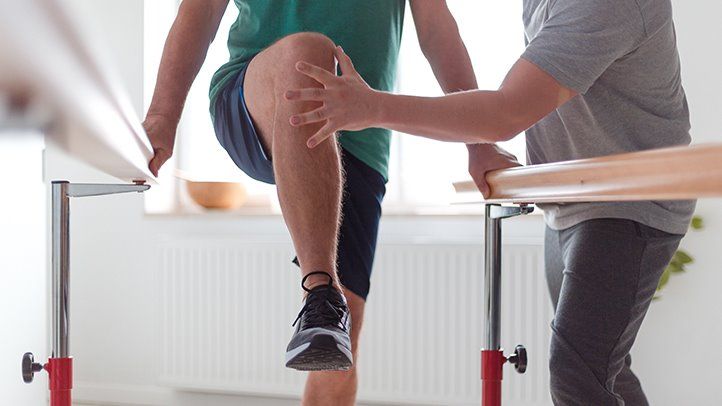Osteoarthritis is the most common form of arthritis. It causes a variety of unpleasant symptoms like joint pain, stiffness, and inflammation. Osteoarthritis is an incurable condition, but there are many treatment options that can help ease symptoms and slow down their progression. Choosing the best treatment option for each person depends on many factors, but most people are trying to do without surgery and prefer conservative treatment options.
Below are 7 non-surgical treatment options to manage osteoarthritis.
1. Physical therapy
Exercise is probably the last thing you want to do when experiencing joint pain and stiffness. But regular physical activity is crucial for the treatment of osteoarthritis. Because of joint degeneration, surrounding muscles become weaker and cannot support the joint. This can aggravate osteoarthritis and worsen your symptoms. Physical therapy rehabilitation can help strengthen the muscles that surround joints, so the joint experiences less stress.
2. Weight management
Excessive weight itself can lead to the development of osteoarthritis. If your joints are already affected by osteoarthritis, excess weight can decrease the effectiveness of treatment and make the condition progress faster. Losing excessive weight can help improve your osteoarthritis symptoms dramatically. This option is most effective for the treatment of weight-bearing joints like the hips, knees, and ankles.
3. Turmeric supplements
Turmeric supplements are a type of alternative treatment that is often used to treat painful inflammatory conditions. Curcumin is the main ingredient of tumeric that acts as a natural anti-inflammatory agent. Consuming it regularly can help reduce pain and improve physical function in people with osteoarthritis. Turmeric supplements are the over-the-counter remedy that is available in most drug stores.
4. Cold and hot therapy
Cold and hot therapy is one of the most well-known treatments for many types of pain, including osteoarthritis pain. A cold compress is often used to numb the aching area and reduce pain. Cold also restricts the blood flow to the affected joint and reduces inflammation.
A hot compress, unlike a cold one, improves the blood flow to the affected area. This helps combat swelling and stiffness. Besides, better circulation improves regeneration and slows down the progression of degenerative processes in the joint.
5. Nonsteroidal anti-inflammatory drugs
Nonsteroidal anti-inflammatory medications are drugs used to treat minor and moderate osteoarthritis inflammation and pain. Some of the NSAIDs include aspirin, naproxen, and ibuprofen. However, these medications aren’t suitable for long-term use. The extended use of NSAIDs can cause adverse effects like heartburn, stomach ulcers, or kidney damage. If OTC NSAIDs don’t work well for you, your doctor may prescribe prescription-only meds like Celebrex.
6. Corticosteroid injections
When even prescription-only NSAIDs cannot cope with your osteoarthritis symptoms, the doctor can suggest corticosteroid injections. The doctor injects steroids directly into the affected joint to relieve inflammation and pain. Steroids start working within a few days and their effect may last up to 6 months. But steroid injection is a one-time solution rather than a permanent treatment. Regular use of corticosteroids can take a toll on the health of the surrounding bones.
7. Viscosupplementation injections
Viscosupplementation injection is a procedure that involves injecting hyaluronic acid into the affected joint. Hyaluronic acid is naturally found in your joints. It lubricates and cushions the joints, protecting them from degeneration. Adding some lubrication with the help of viscosupplementation injections can bring you some relief. This option is often used if oral and injectable steroids fail to ease the symptoms.
When surgery might be necessary?
Unfortunately, conservative treatment options aren’t always effective for the treatment of osteoarthritis. If osteoarthritis caused extensive damage to the joint, joint replacement surgery may be the best way to regain normal functioning. For this reason, if conservative treatment options don’t help, the doctor may suggest surgery as the best treatment option for you.


